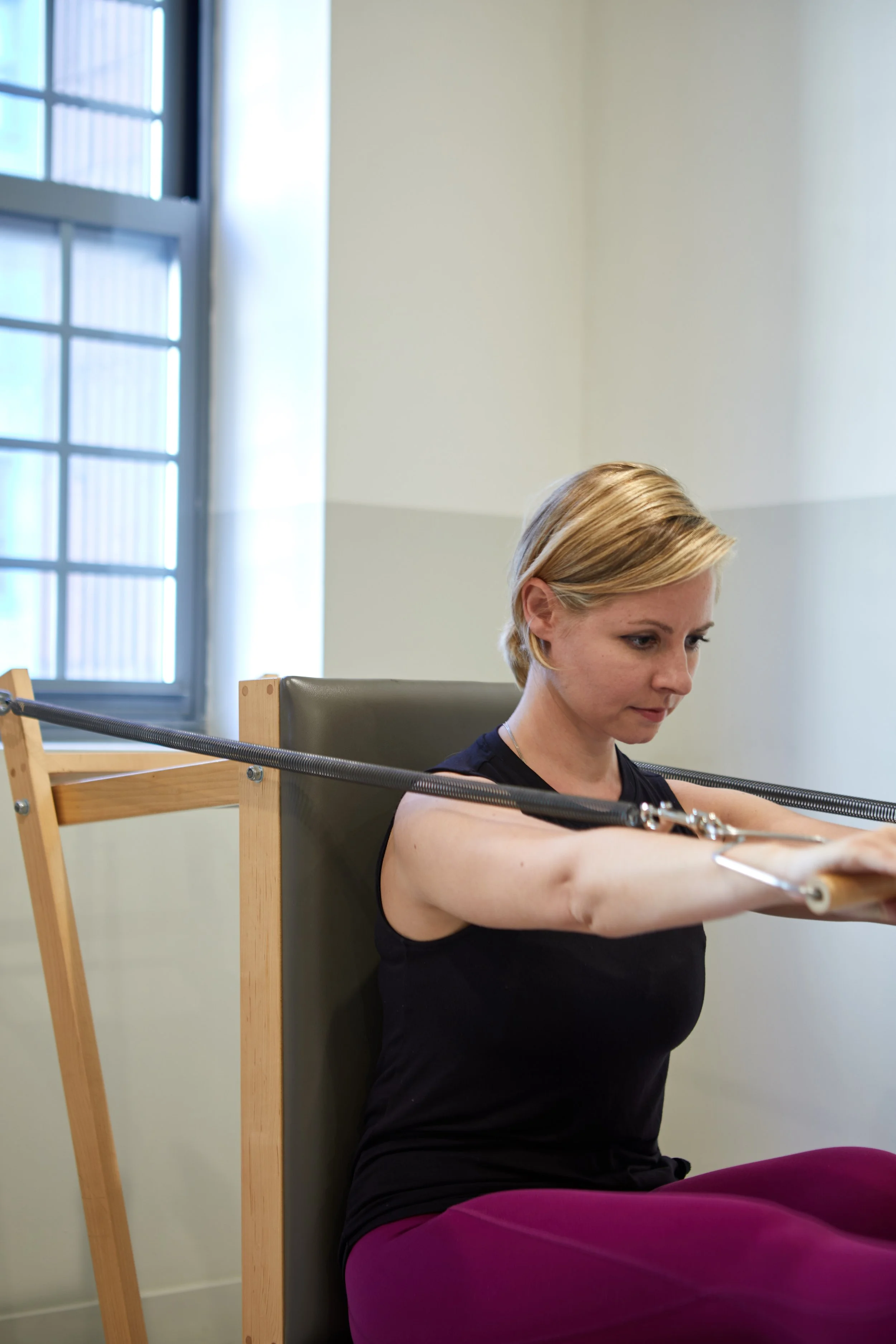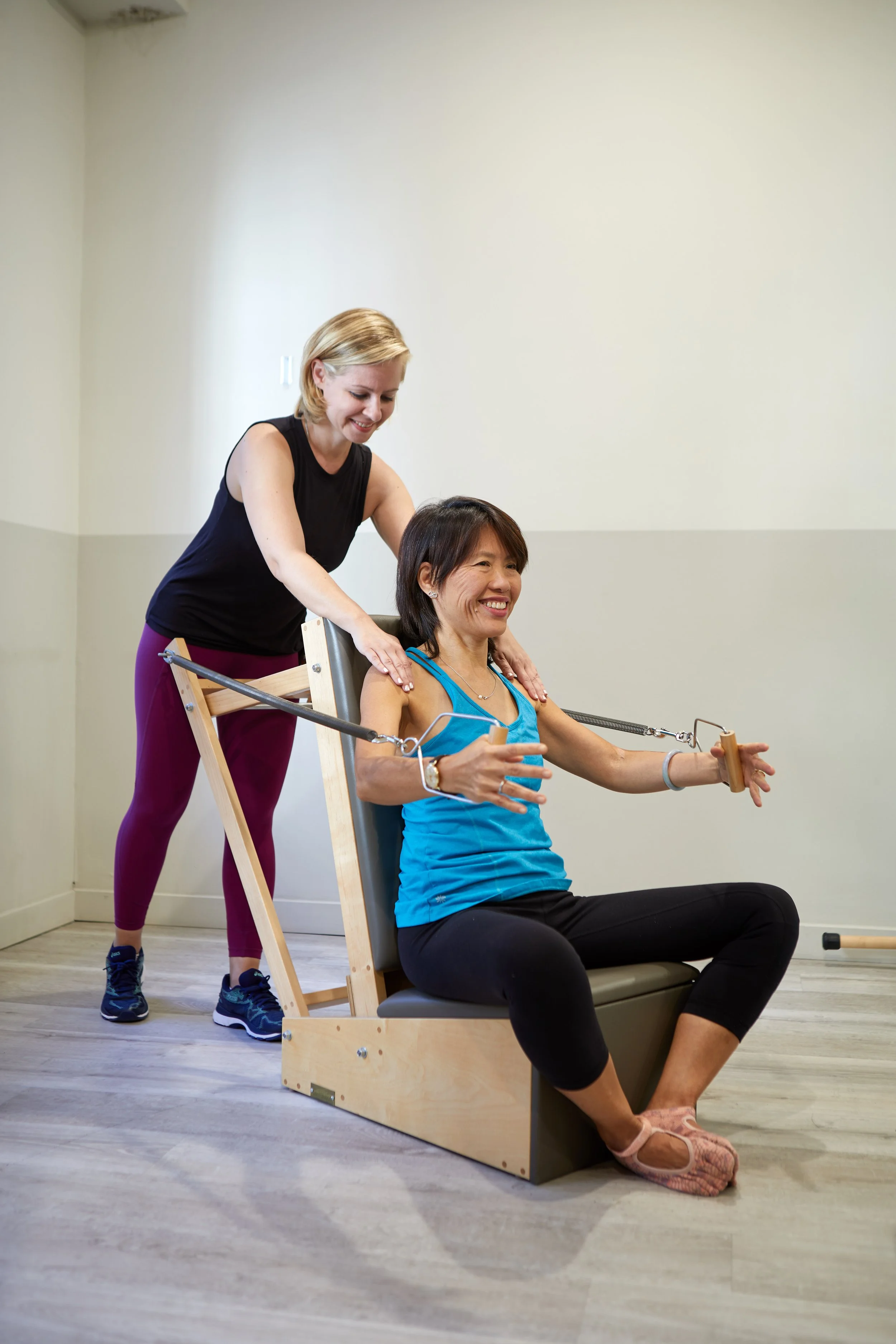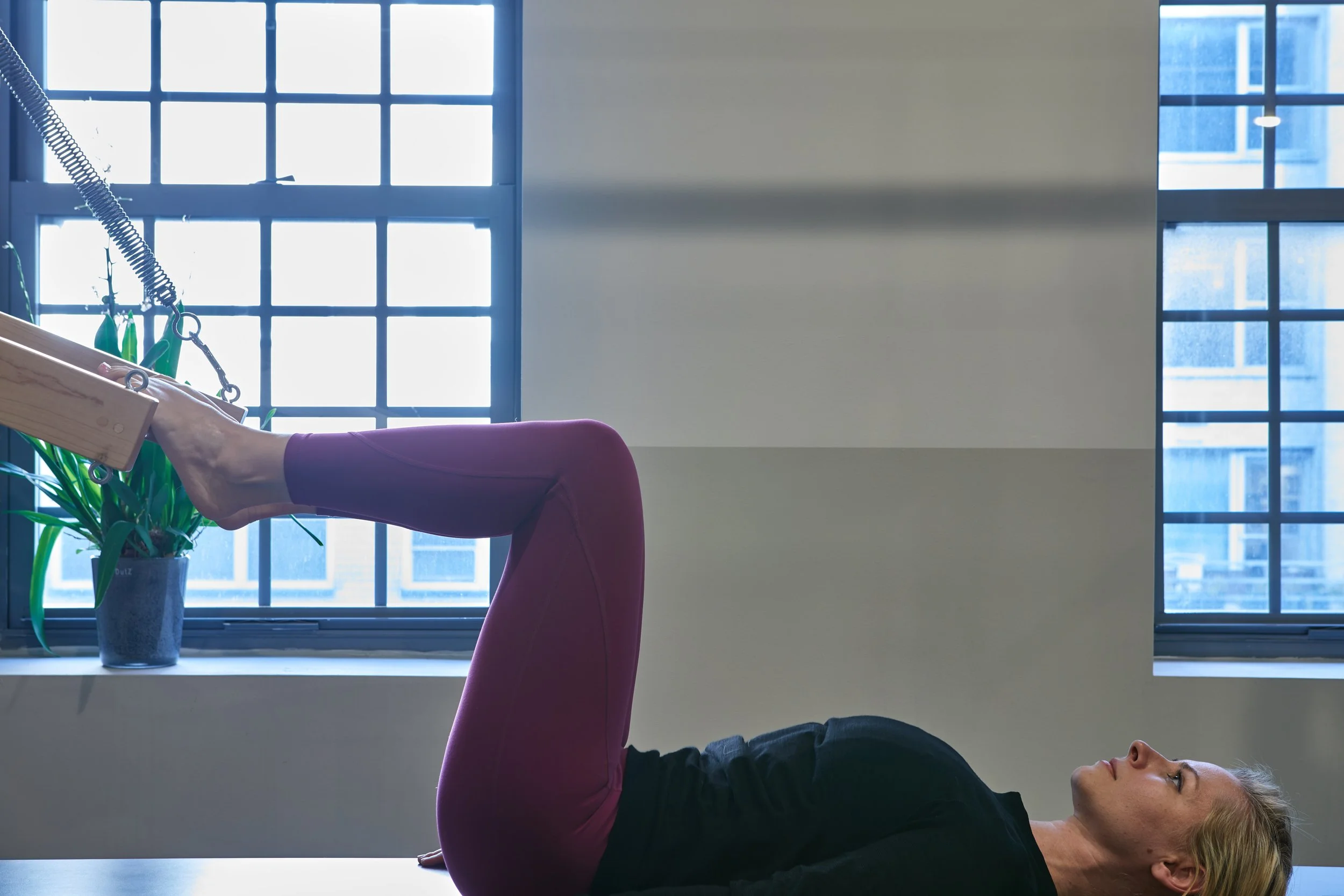Relearning Stability: What the Balance Program Teaches Us About Movement, Breath & the Body
There’s a moment many people share, even if they don’t name it.
A day when you notice your body doesn’t feel quite as coordinated as it used to.
Maybe it’s the slight wobble in your step after a long day, a subtle ache in the lower back, or the way your shoulders seem to rise without permission when you’re stressed.
These shifts rarely arrive overnight.
They build slowly — shaped by posture, breath patterns, stress, old habits, long hours, and the simple fact that we often move through our lives faster than our bodies can process.
That quiet loss of balance isn’t just physical.
It affects mood, attention, breathing, and the way we hold ourselves in space.
And it’s usually the first sign that the body is asking for a reset.
The Balance Program, created by movement educator and Functional Pelvic Health Practitioner Elena Rozmina Marian, was built around that idea: that steadiness is something we can relearn. Not through intensity or repetition, but through awareness, structure, and gentle progression.
Over eight weeks, the program offers a guided way back to your natural rhythm — the one your body hasn’t forgotten, only buried under modern life.
Why Balance Fades Long Before We Notice It
When people think of “balance,” they usually picture standing on one foot.
But balance is everything:
how we walk, how we breathe, how we react to stress, how we transition from sitting to standing, how we hold our center when the day pulls us in all directions.
Losing balance can look like:
gripping the toes for stability
tightening the neck or jaw
shifting weight unevenly from left to right
shallow breathing
fatigue that appears earlier and earlier in the day
unexplained stiffness or coordination issues
Most of this is not about weakness.
It’s about patterns — the ones we repeat without noticing.
That’s why Elena’s program doesn’t begin with exercises.
It begins with noticing.
🧭 A Look Inside the 8-Week Structure
Each week of the Balance Program adds one new layer, slowly enough for the nervous system to integrate it, and clearly enough that the body can adapt without overwhelm.
Below is a simple, narrative view of what unfolds:
Week 1 — Awareness & Grounding
The first week isn’t about “doing.”
It’s about observing:
Where is your weight?
How does your breath move?
What happens to your posture when you relax versus when you concentrate?
These questions create the baseline from which everything else can grow.
Week 2 — Breath as Stability
Breath is the quiet architecture of movement.
This week explores how the diaphragm, ribs, and deep core organize themselves when breath leads instead of effort.
Week 3 — Posture That Feels Like You
This isn’t about rigid alignment.
It’s about exploring posture you can actually live in — whether at your desk, cooking, walking, or carrying groceries.
Sustainable posture replaces performative posture.
Week 4 — Pelvic & Core Foundations
Many balance issues originate in the pelvis.
Here, movement becomes more intentional:
soft core activation, hip stability, and gentle awareness of the pelvic floor — not as a “muscle group,” but as part of whole-body coordination.
Week 5 — Mobility That Supports Stability
This week is slow, fluid, and deeply satisfying.
Spinal mobility, hip circles, ankle work, effortless transitions — all designed to restore movement that has become stiff or guarded.
Week 6 — Dynamic Balance
Once the base is strong, the program introduces small, controlled challenges: shifting weight, stepping, controlled single-leg work.
Nothing destabilizing.
Just enough complexity for the nervous system to learn adaptability.
Week 7 — Integration
Movements start to connect.
Breath guides transitions.
Coordination becomes less conscious, more natural.
It’s often the week when people first say, “I feel different… and I’m not even trying.”
Week 8 — Recalibration
The final week gathers everything into a steady, embodied rhythm.
Not perfection — just a clearer sense of how your body organizes itself when you give it the time, space, and cues it needs.
🧘♀️ The Kinds of Exercises You’ll Practice
The Balance Program blends several modalities, but always with an emphasis on slow, intelligent movement:
breath-led stabilization
deep core and pelvic floor coordination
foot, ankle, and hip strength
slow spinal mobility
supported balance drills
mindful transitions
nervous-system regulation through breath and pacing
These aren’t “fitness workouts.”
They’re recalibrations — ways of teaching the body to move with less effort and more clarity.
💫 What People Usually Notice First
Although every body is different, some of the earliest changes tend to be:
• A calmer nervous system
Breath deepens.
Your body stops bracing.
• More awareness in daily life
You notice shifting weight, posture habits, and tension before they escalate.
• Stronger, steadier steps
Hips and feet begin doing their jobs quietly and efficiently.
• Less discomfort
Neck, back, and hip tension often soften when breathing and alignment improve.
• A different kind of confidence
The kind that comes from feeling supported from the inside out.
Balance is not just a physical skill.
It’s an emotional and neurological one too — and when it improves, everything feels a little more possible.
🌱 Who the Program Is Designed For
People often join the Balance Program when:
they feel out of sync but can’t explain why
tension and fatigue appear earlier than they used to
injuries or old patterns have reshaped movement
anxiety shows up physically
posture feels “collapsed,” tight, or effortful
they want structured, gentle guidance without pushing or pain
The program doesn’t require strength, flexibility, or experience — only curiosity and the willingness to move slowly.
🌿 In the End, Balance Is a Conversation
What makes this program unusual is its tone:
It doesn’t tell your body what to do.
It teaches you to listen to what your body is already saying.
Elena’s guidance is quiet and detailed.
Her focus is on awareness, breath, and form — the things that create sustainable change, not temporary effort.
Movement becomes less about “fixing” and more about experiencing:
How does my body feel today?
What changes when I breathe differently?
Where is there ease?
Where is there gripping?
Can I meet myself with less effort and more curiosity?
These kinds of questions gently rebuild the connection many people lose over years of stress, injury, or busyness.
And because balance is not a single skill but a whole ecosystem, restoring it often brings clarity not just to movement, but to daily life.



